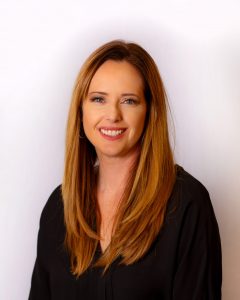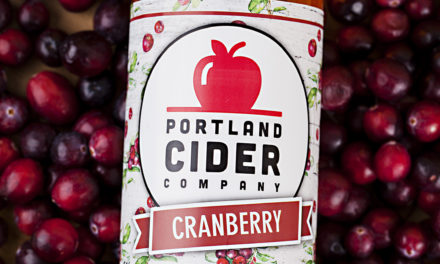When Prohibition was repealed in December 1933, the U.S. Congress established the state mandated three-tier system (SMTTS) for distribution of alcohol beverages as a way to oversee the industry while also providing multiple taxation opportunities as product moved across state lines. While, at the time, it may have seemed a necessary safeguard to prevent monopolies (including organized crime) from controlling the industry, today the three-tier system is seen by many as an antiquated and unnecessary barrier to commerce.

“Consumers have grown accustomed to accessing a wide range of retail goods and not waiting long periods of time.” —Bethany K. Hatef, McDermott Will and Emery
Among the complaints is that SMTTS has failed to keep pace with the rapid development of technologies and information systems that, in other industries, now give consumers direct access to a desired product. While many producers across the alcohol beverage industry are calling for SMTTS repeal, there are some distributors finding ways to work within its constraints to facilitate easier consumer interface while also adhering to its myriad rules and regulations (which vary wildly, state-to-state).
Consumers drive markets
Equipped with an insatiable curiosity for craft beverages, omnipresent internet access, and an expectation of free (or close to it) shipping, consumers have driven the alcohol market into an overflowing, competitive frenzy. “Consumers have grown accustomed to accessing a wide range of retail goods and not waiting long periods of time—sometimes receiving almost instant delivery,” explains Bethany K. Hatef, an associate at international law firm McDermott Will and Emery’s Washington, D.C. office. “Given the traditional U.S. distribution models, which are designed to comply with the three-tier system, it’s easy to see why tension develops, as that system is being forced to innovate and stay competitive in a market driven by consumer demand for instant access to a range of alcohol products.”

“We like any technology that assists in identifying new brands and see them as a huge opportunity.” —John Beaudette, MHW Ltd.
Cue the creation of services such as Minibar, Drizly, and Saucey, which let consumers in major U.S. markets browse and order from local retailers’ inventories—sometimes with delivery times of an hour or less. “Suppliers, distributors, and retailers seem to support this third-party involvement, because [these services] give consumers access to a wide range of products, ultimately helping members of the alcohol industry sell more without increasing their advertising expenditures,” explains Hatef.
Delivery services offer the contents of their retail partners’ storefronts: household name wines, fledgling craft spirits, on-trend producers, and everything in between. And by working as an extension of the retailer, these companies have found a way to educate consumers at the point of purchase with the convenience of immediate access/delivery. It’s a nice enhancement of the three-tier system that truly benefits the consumer. Could this be a first step toward more direct interaction?
“We like any technology that assists in identifying new brands and see [those developments] as a huge opportunity, although not all are as focused on new products as maybe we’d like,” says John Beaudette, president and CEO of New York-based MHW Ltd.
Small producers go virtual

“A small distillery in Chicago can ship directly to a restaurant in New York through the three-tier system.” —Cheryl Durzy, LibDib
Earlier this year, the seemingly impossible hurdle of small producers getting their beverage to market spurred wine industry veteran Cheryl Durzy to form Liberation Distributing (LibDib for short) in San Jose, Calif. “Our goal is to be everyone’s first distributor—providing market access to everybody and teaching them how to be in this business: how to market, how to approach buyers, how to sell,” she says.
A licensed distributor in New York and California (with plans for rapid expansion to other states), LibDib harnesses the three-tier system via an online platform, directly connecting producers and buyers while handling transactions, taxes, and compliance. “A small distillery in Chicago can ship directly to a restaurant in New York through the three-tier system. It’s a little different in every state, but we work [the details] out in the background for them.”
Through partnerships with brokers and marketing teams, LibDib also helps beverage producers network to build their brands. The Red Cadillac, a vibrant restaurant in Union, N.J., is considering LibDib’s services as both a retailer and as a producer of its own infused tequila. Owner and chef Joe Montes cites “always looking for new, interesting products to offer [restaurant] guests and supporting the little guys looking to break into a very controlled and competitive market” as the most desirable retailer features. He also finds LibDib’s lower, 15 percent take and no-minimum-order policy strong motivators.
As a producer, Montes has been unable to attract a distributor; he considers LibDib an option to bring his infused tequila to market at a price and territory he defines, even if it means handling his own shipping and marketing.
“We’re taking the little guys that [larger distributors] say ‘No’ to and helping them grow,” says Durzy. “Eventually, they’ll probably outgrow us and move on to a big distributor, although a high-volume producer could stay with us because they want to save money—and they’re handling sales anyway.“
LibDib also provides mid-level suppliers an easy outlet to test new markets or brands before committing to extensive distribution.
With a technology platform comprising the bulk of its business, LibDib spends a great deal of effort ensuring a polished, efficient interface with the right tools. “We’re building it methodically and learning from our buyers and makers,” says Durzy. “That’s the cool thing about software: You can change and add to it quickly.”

“We never want producers weighed down or overwhelmed with making sure their product is legal to sell where they want.” —Chelsea Washburn, American Spirits Exchange
Middle-tier evolution
Distributors of all sizes and models are coming to recognize the power of technology platforms, even if they haven’t fully engaged them just yet. Says Chelsea Washburn, marketing and sales associate at American Spirits Exchange (ASE), a national importer and distributor based in Bridgeport, Penn., “Online sales platforms are growing, as is our clients’ interest in them.”
ASE helps domestic and international producers introduce products to the U.S. market by “executing the back-office services: making that producer or supplier federally and state compliant, processing their purchase orders with all sizes of distributors—nationwide names, mom and pop-sized, and also independents such as LibDib—offering warehousing, shipping logistics, purchase order factoring, and even direct-to-retail sale options in California and New York.”
There are more and more online sales platforms on the distribution tier. If the platform clearly operates through the three-tier system, ASE can help its client facilitate the interface if they wish. After all, the client’s brand rests on ASE licensure, and ASE wants to help brands grow as efficiently as possible while always being SMTTS compliant.
“Online distributors’ and wholesalers’ channels are newer to the three-tier system,” says Washburn. “If our clients want to pursue an online sales platform, we’ll help them navigate; first back-checking the compliance, then processing the purchase orders, and so on. Our overall mission is to securely provide the compliance and logistic solutions for the complicated infrastructure of the U.S. alcohol market. We never want producers weighed down or overwhelmed with making sure their product is legal to sell where they want.”

“To address our retail customers’ need to be even more responsive to consumers, we’ve made significant investments in supply chain technology.” —Bobby Burg, Southern Glazer’s Wine & Spirits
A starting point
When it comes to online wholesale-to-retail buyers platforms that introduce retailers to new and undiscovered brands, MHW Ltd. works with programs such as beveragemedia.com and sevenfifty.com; it’s also in discussion with LibDib. As a starting point, MHW overhauled its marketing technology by merging its own 80-year sales data, industry-wide Big Data, ongoing retail updates, and cloud-based computing. “The new system we’ve just launched is accessible from anywhere and in formats that let [clients and their brands] make real-time decisions that favorably impact their business,” he says.
Southern Glazer’s Wine & Spirits has a similarly deep database of wine and spirits, powered by the latest trend and execution information, and its sales force uses the data to help customers and suppliers craft optimal strategies. Says Senior Vice President and Chief Supply Chain Officer Bobby Burg, “To address our retail customers’ need to be even more responsive to consumers, we’ve made significant investments in supply chain technology. This includes integrating new purchasing and demand planning platforms with the goal of right-sizing our inventory to be more demand-based.”
What’s next?
According to a recent study by Wine & Spirits Wholesalers of America (WSWA), family-owned distributors delivering wine and spirits to U.S. restaurants, bars, and stores generate more than $50 billion in annual tax revenue and employ more than 74,000 workers. But has the system become too monolithic to evolve?
Online retail giant Amazon announced its purchase of organic food and drink grocer Whole Foods in June of this year, a merger that will fundamentally challenge SMTTS regulations. Amazon Prime’s click-and-collect service, now coupled with more than 450 retail outlets across the country, could mean consumers will soon be able to get their drink on without jumping through so many hoops.
Then again, maybe not. Retailers and distributors across the country are already crying “foul,” challenging Amazon’s right to combine brick-and-mortar stores with its online practice of accepting fees from third-party producers to list and promote product. Expect this one to land in court at some point.
So here we are, 85 years after Prohibition ended: The alcohol beverage industry is booming, driven in large part by innovative processes, experimental producers, and adventurous consumers; and the future promises to yield even more change in the industry as suppliers, distributors, retailers, and the technology they harness transforms to keep pace with consumer trends. “It’s the perfect storm of consumers looking for new products, social media use, technological advances, and the creation of more importers, wholesalers, and service companies to answer that demand,” says Beaudette.
Right now, it’s anybody’s game—and the rules are changing fast.











